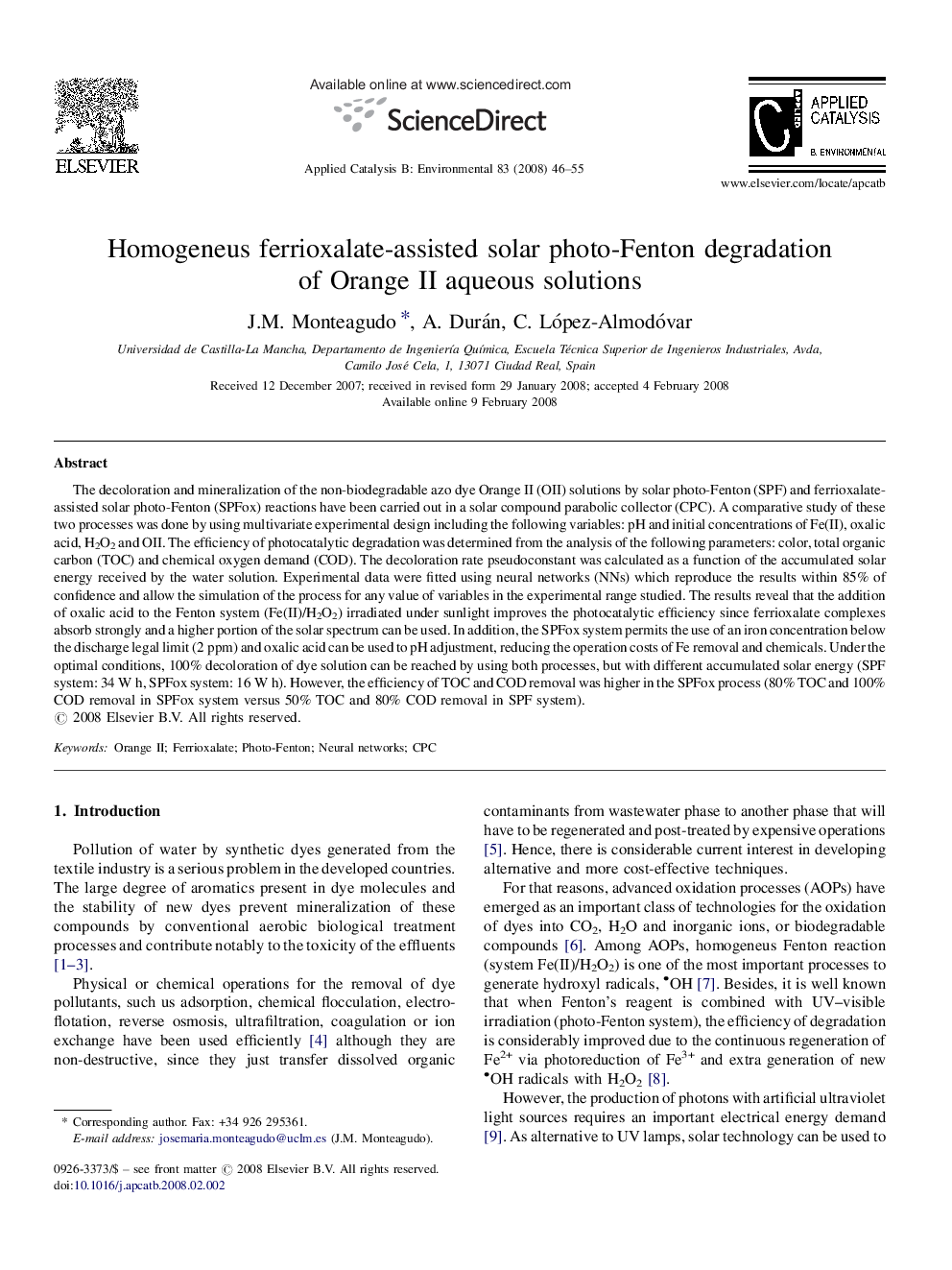| Article ID | Journal | Published Year | Pages | File Type |
|---|---|---|---|---|
| 48022 | Applied Catalysis B: Environmental | 2008 | 10 Pages |
The decoloration and mineralization of the non-biodegradable azo dye Orange II (OII) solutions by solar photo-Fenton (SPF) and ferrioxalate-assisted solar photo-Fenton (SPFox) reactions have been carried out in a solar compound parabolic collector (CPC). A comparative study of these two processes was done by using multivariate experimental design including the following variables: pH and initial concentrations of Fe(II), oxalic acid, H2O2 and OII. The efficiency of photocatalytic degradation was determined from the analysis of the following parameters: color, total organic carbon (TOC) and chemical oxygen demand (COD). The decoloration rate pseudoconstant was calculated as a function of the accumulated solar energy received by the water solution. Experimental data were fitted using neural networks (NNs) which reproduce the results within 85% of confidence and allow the simulation of the process for any value of variables in the experimental range studied. The results reveal that the addition of oxalic acid to the Fenton system (Fe(II)/H2O2) irradiated under sunlight improves the photocatalytic efficiency since ferrioxalate complexes absorb strongly and a higher portion of the solar spectrum can be used. In addition, the SPFox system permits the use of an iron concentration below the discharge legal limit (2 ppm) and oxalic acid can be used to pH adjustment, reducing the operation costs of Fe removal and chemicals. Under the optimal conditions, 100% decoloration of dye solution can be reached by using both processes, but with different accumulated solar energy (SPF system: 34 W h, SPFox system: 16 W h). However, the efficiency of TOC and COD removal was higher in the SPFox process (80% TOC and 100% COD removal in SPFox system versus 50% TOC and 80% COD removal in SPF system).
